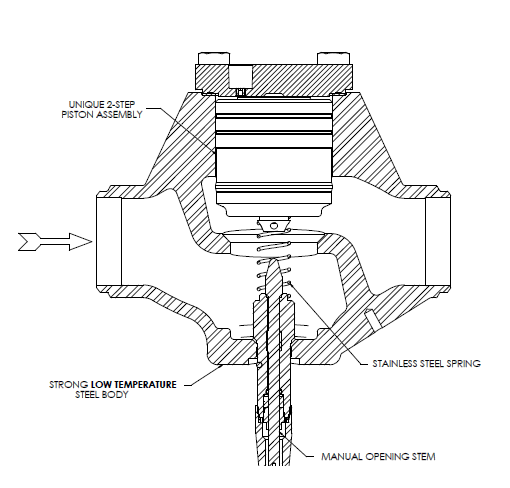
Gas-Powered. Durable. Cost-Efficient.
The CHCK5DW valve is ideally suited for positive closure of suction, liquid over feed, and flooded evaporator gas return lines during defrost in low temperature applications. These valves can be installed in horizontal or vertical lines and are best installed on their sides for improved conveyance of liquid and oil. Because they are gas-powered to close, the valves operate reliably even under viscous oil conditions. They are suitable for Ammonia, Halocarbons, CO2 and other Hansen approved refrigerants and gases.
These valves are normally held fully open by means of a spring. When a high pressure refrigerant gas is introduced to the valve through the pilot line inlet, the Upper Piston and Lower Piston are forced down, compressing the Opening Spring and seating the Lower Piston firmly on the valve body taper seat. While the CHCK5D is designed to withstand the shock of quick closing, if the noise or system or piping shock is excessive, a lower controlled refrigerant gas pressure may be advisable. Use an outlet pressure regulator, a hand expansion valve, or an orifice. For CHCK5DW valves, an orifice is included as standard in the cover plate. This orifice should not be removed or modified.
